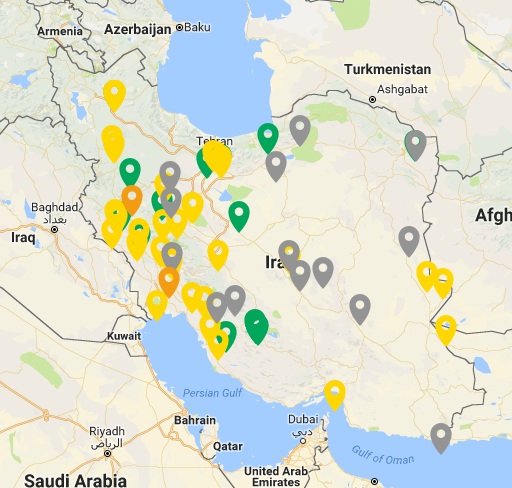Iran's Department of Environment on Sunday launched a countrywide air quality monitoring system to provide real-time and detailed data, such as air quality index and concentration of the six main pollutants.
The system is available to the public and accessible online at http://aqms.doe.ir/.
"There are some 190 air quality monitoring systems throughout the country, 29 of which are in Tehran," Mehr News Agency quoted Saeed Motessaddi, deputy for human environments at DOE, as saying during a ceremony to unveil the online portal.
The system refreshes the AQI and concentration of pollutants (PM2.5, PM10, carbon monoxide, ozone, nitrogen dioxide and sulfur dioxide) every 30 to 50 seconds. The measurements are based on guidelines approved and followed by the likes of the United States' Environment Protection Agency and the United Kingdom's Environment Agency.
Prior to the launch of the new database, air quality monitoring stations in provincial capitals would announce the average air quality index every 24 hours.
Officials and experts will have instant access to data collected by the monitoring systems at the DOE headquarters and could upload the stats on the global air quality control website (http://aqicn.org). The first phase of the project was launched in April, when 24 stations in metropolises went on stream.
Due to a lack of a standard analysis method employed by monitoring devices, inaccurate data were frequently released in major cities such as Isfahan. However, over the past three years, 50 particulate matter analyzers have been purchased from foreign companies to equip the system with state-of-the-art technology.
"The number of air quality monitoring stations has increased by 21% and in western provinces exposed to dust storms, systems capable of registering PM2.5 concentrations have been installed in small counties as well as the provincial capitals."
The information is provided through diagrams, showing the air quality level based on the World Health Organization's air quality index standard, dividing conditions to Clean (0-50), Healthy (51-100), Unhealthy for Sensitive Groups (101-150), Unhealthy (151-200), Very Unhealthy (201-300) and Hazardous (301-500).
According to Motessaddi, the measure has been taken in part to enforce the government's policy on transparency, provide instant data for public and strengthen cooperation between relevant authorities.


